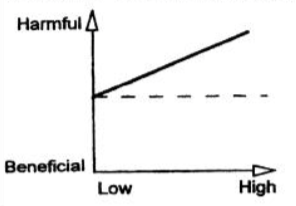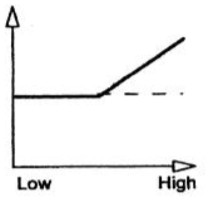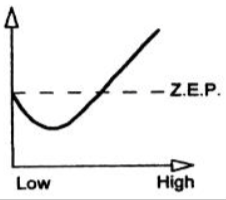ECOTOX Final
1/62
There's no tags or description
Looks like no tags are added yet.
Name | Mastery | Learn | Test | Matching | Spaced |
|---|
No study sessions yet.
63 Terms
-Data analysis (acute)
Focus: Short-term, high-concentration exposure to assess immediate toxic effects.
Point Estimates:
LC50 – Lethal concentration for 50% of the population.
EC50 – Effective concentration for 50% of the population (often used for chronic or sublethal effects).
-Data analysis (chronic)
Focus: Long-term, low-concentration exposure to assess sublethal and reproductive effects.
Main Metrics:
NOAEC (No Observed Adverse Effect Concentration) – Highest concentration without statistically significant adverse effects.
LOAEC (Lowest Observed Adverse Effect Concentration) – Lowest concentration with statistically significant adverse effects.
MATC (Maximum Allowable Toxicant Concentration) – Geometric mean of NOAEC and LOAEC.
-Statistical analysis (acute)
Probit Method (Parametric) – Requires homogeneity of variances; more powerful if assumptions are met.
Trimmed Spearman-Karber (Non-Parametric) – Tolerates non-homogeneous variances but is less powerful.
-Statistical analysis (chronic)
Use ANOVA followed by multiple comparison tests.
NOAEC is found by moving from the lowest concentration up until you find the highest concentration without significant adverse effects.
LOAEC is found by identifying the lowest concentration that shows a significant adverse effect.
Linear dose response curve (Linear-no threshold)

Threshold dose response curve

Hormetic dose response curve

Hormesis
· Low doses of a contaminant appear to be beneficial (Gamma rays and mouse malignant tumor incidence)
· Stimulatory effect at low doses; inhibition at high doses
-LC50 values
· Lethal concentration for 50% of the population.
-Problems with ANOVA/MATC Analysis
· Assumes safe level has been found
· Depends highly on selection of test concentrations
· Sloppiness rewarded higher variability → less likely to detect a difference → higher MATC
Source

Sink
· pre/post-Clean Water Act
· hydrophobic persistent chemicals
Bioturbation
· Movement by benthic organisms (e.g., worms, crabs) can resuspend contaminants.
-Sediment toxicity testing
Benthic Organisms: Live on or in the substrate.
Problems
Clean, Reference Sediments: Hard to find for accurate comparisons.
Natural vs. Artificial Sediments:
Natural: Can contain other, unmeasured contaminants.
Artificial: Lacks some natural chemical and physical characteristics, like acid volatile sulfides.
-BSAFs (Biota-sediment accumulation factor)
· Measures the accumulation of contaminants from sediments into organisms.
· Used to estimate the potential for biomagnification.
· EPA Database: Over 20,000 chemicals associated with Superfund sites.
-Sediment quality guidelines

-Effects of contaminants on population size (through courtship behavior, hatching success, etc.)
Reproductive Effects:
Disruption of reproductive hormones (e.g., estrogen, testosterone).
Impacts on gonads (ovaries, testes), leading to reduced fertility.
Reduced hatching success and embryo survival.
Survival Effects:
Increased death rates.
Shifts in age structure within populations
(e.g. Fish Kill in Plaquemines Parish)
-Effects of contaminants on genetic diversity on the population lvl (through bottleneck effect, natural selection, etc.)
Population Bottlenecks:
Toxins can reduce effective population size, decreasing the number of individuals contributing alleles to the next generation.
Results in loss of genetic diversity.
Random chance determines which alleles are preserved (not natural selection).
Natural Selection:
Over time, populations may evolve to tolerate specific contaminants.
This can reduce genetic diversity by eliminating sensitive genotypes.
Trade-Off: Populations adapted to one stressor may be more sensitive to others (e.g., Baetis tricaudatus mayflies tolerant to metals but potentially more vulnerable to other stressors).
-Effects of contaminants on community interactions (competition, predation, parasitism, etc.)
Predation and Interactions:
Predator-prey dynamics
Sea otters being killed by oil then affecting sea urchins in the kelp forest
Examples:
Industrial Melanism: Peppered moths preyed on by birds, with survival influenced by industrial pollution.
Climate Change and Eucalyptus: Increased stress in eucalyptus plants, leading to higher toxin concentrations, affecting koalas.
Parasitism: Sea lamprey in the Great Lakes preying on trout, causing wounds and infections by increased contaminants.
-Effects of contaminants on community structure (richness, diversity, sensitive versus tolerant species, Index of Biological Integrity, etc.)

Microcosms (Ecosystem effects):
Small, controlled studies that simulate parts of an ecosystem.
Often used indoors with fewer species.
Mesocosms (Ecosystem effects):
Larger, more complex outdoor studies with multiple species.
More realistic, but more costly and difficult to control.
Whole Ecosystem Studies (Ecosystem effects):
Entire lakes, forests, or other large-scale systems (Experimental lakes in Can.).
-Risk:
· chance of harmful effects to human health or to ecological systems resulting from exposure to an environmental stressor
-RA (risk assessor) vs. RM (risk manager)
· RA: the scientist who does the field work and report assessing the severity of the case
· RM: the person with the say in action from report and science (could be a scientist or not)
-(Framework of RA) Analysis:
Exposure Assessment: Identify sources, concentrations, and exposure routes.
Effects Assessment: Dose-response testing, acute and chronic effects.
-(Framework of RA) Risk Characterization:
Estimate the likelihood of adverse effects.
Include uncertainties and data gaps.
-(Framework of RA) Risk Management:
Make decisions based on risk assessment.
Set discharge limits, air pollution controls, or declare Superfund sites.
-Hudson River PCBs example
Background:
Contamination from GE capacitor plants.
~1.3 million pounds of PCBs discharged.
200 miles of the river declared a Superfund site.
Risk Assessment Steps:
Problem Formulation: Are fish safe to eat?
Analysis: PCB concentrations in sediments, fish, and water.
Risk Characterization: High risk to human health if consuming fish.
Risk Management: Dredging, capping w/ anthracite, habitat restoration.
-Rachel Carson and Silent Spring → environmental movement
Published Silent Spring in 1962, highlighting the dangers of DDT and other chemical pesticides.
Sparked public awareness of pesticide impacts on wildlife, particularly songbirds and raptors.
Criticized by chemical companies but credited with inspiring the modern environmental movement.
Called for responsible pest control rather than outright bans.
-Clean Air Act (1970)
Regulates air emissions from stationary and mobile sources.
Amended in 1990 to include controls for acid rain and ozone-depleting substances.
-Clean Water Act (1972)
Regulates pollutant discharges into U.S. waters.
Requires permits for point source discharges and sets water quality standards.
Includes provisions for Total Maximum Daily Loads (TMDLs) to limit pollutant levels.
-Resource Conservation and Recovery Act
· Control of hazardous waste
· Generation, transportation, storage, treatment, and disposal
-Comprehensive Environmental Response, Compensation and Liability Act (Superfund)
Provides funding and legal authority for cleaning up hazardous waste sites.
Holds responsible parties financially liable for contamination.
Example: Love Canal – 21,000 tons of chemical waste buried and capped, later contaminated groundwater and homes.
-Love Canal example
Abandoned canal filled with chemical waste (caustic, carcinogenic, dioxins), later capped and sold to the city for $1.
Contamination discovered in 1977, leading to evacuations and long-term health effects for residents.
1977: snow melt seeped into canal, carried chemical waste into groundwater & to the surface, into yards and basements
-Uses of Asbestos
· fire retardant coatings, concrete, bricks, pipes and fireplace cement, pipe insulation, ceiling insulation, ceiling tiles, acoustic tiles, drywall, vinyl flooring, roofing, lawn furniture, and drywall joint compound
-Physical properties of Asbestos
· 6 different silicate minerals
· long, thin, crystal fibers
· resistant to fire, heat, chemical, and electrical damage
Asbestos
Scarring of lung tissue (Asbestosis).
Shortness of breath, cough, chest pain, clubbing of fingers.
Ranges from mild to severe.
· Takes years of exposure to develop.
Mesothelioma

Lung cancer
Definition: Cancer that originates in the lung tissue (not the lining).
Symptoms: Shortness of breath, cough, wheezing, bloody mucus, fatigue.
Causes: Can be caused by asbestos but also by other factors like smoking, PAHs (polycyclic aromatic hydrocarbons), and radon.
Can metastasize and spread to other organs.
Libby, Montana Vermiculite Mine:
Ore Contamination: Contained 10% tremolite asbestos.
Health Impact: Over 400 deaths and 1,000+ cases of lung issues among miners and residents.
Superfund Site: Declared after decades of contamination.
Company Involved: W.R. Grace – filed for bankruptcy to protect against over 100,000 personal injury claims.
Legacy: Vermiculite from this mine can still be found in millions of homes, primarily as Zonolite insulation.
-Scientific method (hypothetico-deductive; key steps)
1. Observe
2. Gather
3. Hypothesize
4. Predict
5. Experiment
6. Conclusion
7. Communicate
-Key elements of a good experimental design
Control (comparative), replication (Samples and experimental units per treatment), randomization (avoid bias)
-Dependent V:
What is measured, response variable
-Independent V:
What you are manipulating or change in the environment (what you wish to determine)
-Aliphatic Properties
Non-polar, highly flammable, and insoluble, e.g. CH4
-Aromatic Properties
Cyclo of C, Being generally nonpolar, hydrophobic, and having a high carbon-to-hydrogen ratio,
Surfactant
Mixture of Aromatic and Aliphatic compounds; hydro philic and phobic
-Halogens, organohalogens
DDT, PCB, PBDE, Dioxins, CFC; tend to be persistent, bioaccumulate, and toxic
-Inorganic Chemical Contaminants: As
Persistent but typically bioaccumulates without significant biomagnification; its inorganic forms are more toxic than its organic forms and can cause enzyme inhibition, gastrointestinal problems, and cancers in humans
-Inorganic Chemical Contaminants: Hg
Highly persistent, neuro toxin, especially in its organic forms (e.g., methylmercury), and it biomagnifies in food webs, leading to neurological and developmental issues in both wildlife and humans.
-Dimethylmercury (CH3)2Hg (Organic form)
-potent neurotoxin!
-inhalation, absorption of 0.1 mL (= 100 μL) fatal
-passes through latex, neoprene, butyl gloves
-crosses blood-brain barrier
-symptoms may be delayed by months
-Polychlorinated biphenyls (PCB’s)
-Used in hydraulic systems, plasticizers, pesticides, & carbonless copy paper
-Highly persistent, high Logkow
-Endocrine, nervous, and immune disruptors
-Polybrominated diphenyl ethers (PBDE’s)
• Flame retardants
• High Logkow, high persistence
• Endocrine, nervous, and immune disruptors
-Organophosphates
-insecticides, herbicides, nerve gases, (solvents, plasticizers)
-acute toxicity is high, less persistent (days to weeks)
-low log Kow (~3.0), no biomagnifation
-neurotoxin
-Perfluoroalkyl substances (PFAS)
-Food packaging, makeup, stain-resistant furniture, Nonstick cookware, firefighting foam
-short C chains, lots of fluorine
-moderate to high Kow, very persistent (decades)
-Carcinogenic; go to blood, liver, kidney
-Bioaccumulation
-net uptake of chemical from the environment by all sources– respiration, diet, water, dermal
-Biomagnification factors
-Tend to be lipophilic contaminants
-Higher trophic level organisms are generally: longer-lived, larger, have more lipid
-Lower trophic level organisms tend to grow faster: more growth dilution, shorter lived
-Biotransformation of organics (Phase I)
-Oxidation, reduction, or hydrolysis reactions
-Catalyzed by P450 enzymes
-Functional group added (trailer hitch)
-Makes some chemicals hydrophilic enough to be excretable (although sometimes more toxic or carcinogenic)
-Other chemicals still too lipophilic...
-Biotransformation of organics (Phase 2)
-Conjugation reactions (hook up to trailer hitch)
-Adds water-soluble molecules to the contaminant.
– Amino acids
– Sulfates
– Glucuronic acid
-Catalyzed by Transferases (not CYT P450 enzymes)
Overall goal of Biotransformation
to make contaminants more hydrophilic for easier elimination
Biotransformation of Inorganics
-Biomethylation (microbes adding methyl groups)
-Binding of metallothioneins (detoxifying)
-Biomineralization (transform inorg. into bone, shell, chitin)
Steps of risk assessment
P: Problem (endpoints, safe to eat?)
A: Analysis (sources and frequency?)
R: Risk characterization (high or low)
M: Management (decision by RM)